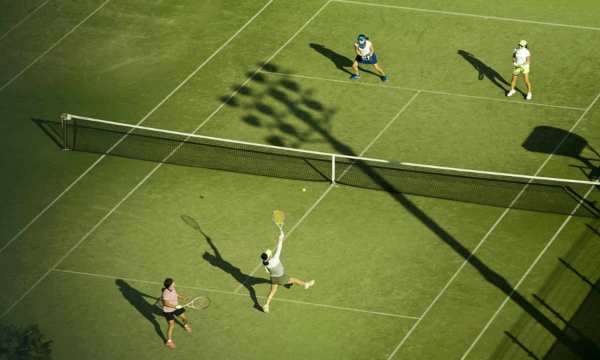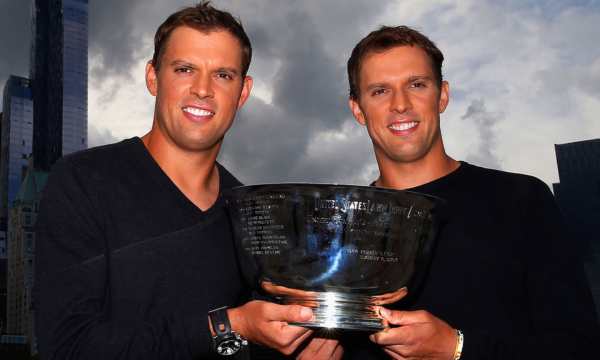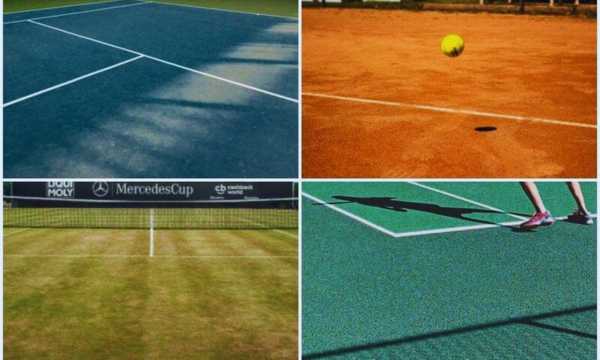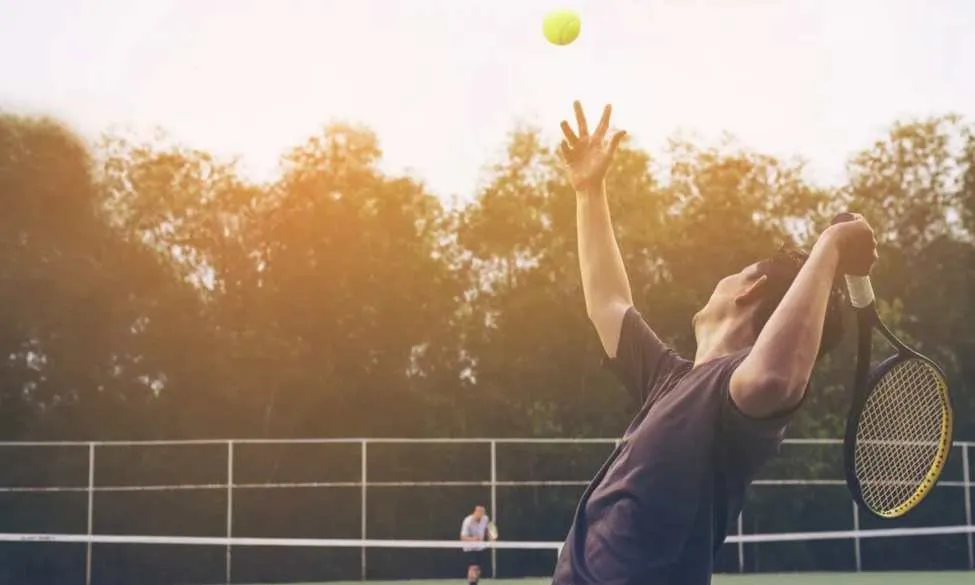Doubles Tennis: Essential Rules and Top Players
Doubles tennis offers a fascinating spectacle that combines strategy, coordination, and technical skill in a unique dynamic within the sport.
Ad
The synchronization between partners and non-verbal communication elevate doubles tennis to a different level from the singles game.
You will learn to identify the precise movements that transform good doubles teams into great champions.
Get ready to enter the world of doubles tennis, learn its specific rules, and discover the athletes who made history in this fascinating modality.
Scoring Rules in Doubles
Each point follows the familiar sequence of 15, 30, 40, and game, just as in singles matches. The “advantage” principle also applies when both teams reach a 40-40 tie.
Many professional doubles tennis tournaments today adopt the “No-Ad” system (no advantage) to speed up matches.
In this format, when a 40-40 tie occurs, the next point directly determines the winner of the game. The receiving team chooses which side will receive the serve at this decisive moment.
In major competitions, such as Grand Slams, the format may vary. Wimbledon still maintains the full third set in men’s doubles, while other tournaments adopt the match tie-break.
This rule makes matches more unpredictable and intense, as few points can decide an entire match.
Understanding Doubles Tennis Court Boundaries
In doubles tennis, the court is 23.77 meters long and 10.97 meters wide, about 1.37 meters wider on each side compared to a singles court.
These extra side lanes, called “doubles alleys”, completely transform the game. These alleys create new angles and play possibilities that don’t exist in singles matches.
Important characteristics of the doubles court:
- Service areas maintain the same dimensions.
- The net remains at the same height (91.4 cm at the center).
- The center service line divides the court into equal service areas.
- The outer sidelines mark the legal area for doubles.
Understanding the specific boundaries of the doubles court is essential for developing good strategies. Many successful doubles teams master the strategic use of the side alleys, exploring angles that only exist in this version of the sport.

Doubles-tennis-court-(Source-Google)
Serving Order in Doubles
The serving dynamics in doubles tennis follow specific rules that add an extra layer of strategy to the game.
Each team must decide which player will serve first before the start of each set. The established order must be maintained throughout the set in question.
If we designate the players as A and B on one side, and C and D on the other, the typical rotation would be: A, C, B, D, repeating until the end of the set. This alternation creates different matchups and dynamics throughout the match.
Important rules about serving in doubles:
- The serving order can be changed at the start of each new set.
- The receiving order can also change between sets.
- During the tie-break, the serving sequence follows the established order but starts with the next player.
- Each player serves a complete game before passing the turn.
In professional doubles tennis, teams often designate their roles considering each athlete’s strengths.
Some teams keep a serve specialist on the right side (deuce), while others prefer to alternate positions to confuse opponents.
This complexity makes doubles play fascinating for both players and spectators.
Strategic Choice of Side and Order
The choice of court side and player order involves deep tactical considerations. Winning doubles teams know that these initial decisions are fundamental to the game’s development.
Professional doubles teams spend considerable time analyzing their opponents to define their formation. The choice between receiving or serving first depends on the team’s playing style.
Some prefer to establish an immediate advantage with their serves, while others aim to break the opponent’s serve early.
In major doubles tennis competitions, players often keep detailed statistics on preferences and effectiveness. The decision on which player will receive the serve depends on individual return skills.
Many teams position their best volleyer at the net while the partner with the best return stays at the baseline during the reception.
Key Rules During the Point
One of the most distinctive rules is that any player on the team can hit the ball, regardless of who received the serve. This creates unique tactical possibilities and requires constant communication between partners.
During a point, players cannot touch the net, step into the opponent’s court, or physically interfere with the game before the ball is out of play.
Contact between partners is not considered a violation, unlike contact with opponents or court equipment. Important rules to observe:
- Players can communicate verbally during the point (unlike singles tennis in some tournaments).
- A ball that touches the net during the rally is still in play.
- A ball that touches any part of the line is considered in.
- Players can cross to the partner’s side to hit the ball.
In modern doubles tennis, communication between partners has become increasingly sophisticated. Discrete signals indicate positional changes or specific tactics.
The best doubles teams develop their own almost telepathic language, allowing instant tactical adjustments without opponents noticing the intentions.
Who Are the Best Doubles Teams Currently?
The current doubles tennis scene presents a fascinating balance between experienced veterans and emerging young talents.
The duo formed by Americans Rajeev Ram and Joe Salisbury has dominated the men’s circuit with their impressive consistency and complementary skills. Their playing style combines powerful serves with precise volleys.
In women’s tennis, the teams led by Coco Gauff and Jessica Pegula have demonstrated tremendous on-court chemistry. The combination of youth and experience has yielded exceptional results in major tournaments.
The Czech duo Kateřina Siniaková and Barbora Krejčíková also maintain a prominent position with their robust play and exemplary coordination. Notable teams in the world ranking:
- Mate Pavić and Nikola Mektić (excellence on fast courts).
- Kevin Krawietz and Andreas Mies (clay specialists).
- Hsieh Su-wei and Elise Mertens (dominance on grass courts).
- Marcel Granollers and Horacio Zeballos (consistency on all surfaces).
Mixed doubles have also gained prominence in Grand Slam tournaments. Partners combining the specific skills of men’s and women’s tennis create extraordinarily dynamic matches.
Doubles Teams That Made History in the Sport
The twin brothers Bob and Mike Bryan dominated the circuit for over a decade, winning 16 Grand Slam titles together. Their almost supernatural synchronization set a standard of excellence hard to match.
In women’s tennis, the pairs formed by Martina Navratilova and Pam Shriver wrote an unforgettable chapter. They won 20 Grand Slam titles and maintained an unbeaten streak of 109 matches between 1983 and 1985.
This mark remains one of the most impressive records in all professional sports. Historic partnerships that revolutionized the game:
- John Newcombe and Tony Roche (12 Grand Slam titles together).
- Todd Woodbridge and Mark Woodforde, the “Woodies” (11 Grand Slam titles).
- Serena and Venus Williams (14 Grand Slam titles in women’s doubles).
- Leander Paes and Mahesh Bhupathi (pioneers of Indian tennis).
The “Woodies” introduced a playing style that prioritized precise volleys and perfect communication. The great doubles teams in history stood out not only for their titles but for tactical innovations.

Bob-and-Mike-Bryan-(Source-Google)
Relive Iconic Moments Between Doubles Teams
The 2008 Wimbledon final between the Bryan brothers and the duo Daniel Nestor and Nenad Zimonjić remains one of the most intense battles ever seen. Five sets of impeccable tennis culminated in a decisive tie-break that left spectators breathless.
At the London 2012 Olympics, doubles tennis gained special prominence when Roger Federer and Stan Wawrinka faced the British Andy Murray and Jamie Murray.
The local crowd’s energy created an electric atmosphere rarely seen in doubles matches. The pressure of the moment produced spectacular plays that went down in Olympic history.
Memorable moments in doubles:
- The Bryan brothers‘ record streak of 7 consecutive Grand Slam titles (2012-2013).
- The golden slam of the duo Serena Williams and Venus Williams in 2012.
- The epic 6-hour battle between Horia Tecău/Robert Lindstedt and Jürgen Melzer/Philipp Petzschner in the Davis Cup.
- The incredible comeback of Leander Paes/Radek Stepanek against the Bryan brothers at the 2013 US Open.
The 2019 ATP Finals final between Pierre-Hugues Herbert/Nicolas Mahut and Raven Klaasen/Michael Venus showcased such a high level of tennis that it redefined the strategic possibilities of modern doubles play.
Strategy and Positioning of the Best Doubles Players
Success in doubles tennis fundamentally depends on sophisticated strategies and intelligent court positioning.
Classic formations include the “one up, one back” position (known as the Australian formation) and the “I” formation with both players aligned on the service line. Each configuration offers specific advantages depending on the game’s situation.
The best doubles teams in the world master the art of non-verbal communication and synchronized movements. Court coverage requires constant anticipation and deep knowledge of the partner’s tendencies.
Elite doubles players can almost instinctively predict each other’s movements after years of partnership. Advanced strategies used by professionals:
- “I” formation during service to confuse the receiver
- “Poach” movement (interception at the net) at strategic moments
- Switching positions during the rally to exploit the opponents’ weaker side
- Coded communication to indicate specific tactics
In modern doubles, aggressive net positioning has become dominant. The world’s best doubles players, like Nikola Mektić and Mate Pavić, maintain territorial control through precise volleys and perfect angular coverage.
The ability to pressure opponents with coordinated approaches to the net often defines the winners of the most important tournaments.
Conclusion
Throughout this article, we’ve explored from the fundamental rules to the historical moments that defined doubles tennis.
We understood how the specific court dimensions and special regulations shape this fascinating game. The great partnerships that marked generations showed us how the chemistry between two athletes can transcend individual skills and create moments of sporting magic.
The constant evolution of strategies in doubles play keeps this modality always fresh and interesting. The most attentive fans perceive the tactical subtleties and body language that reveal the depth of this game.
Next time you watch a doubles match, look beyond the obvious plays – notice the exchanged glances, the millimetric positional adjustments, and the movement patterns that reveal the true spirit of this extraordinary modality.
FAQ
What was the most impressive record in doubles tennis?
What is a “super tie-break” in doubles?
Can I officially play doubles with different partners in the same tournament?
What is the “poach” movement mentioned in strategies?
How is the doubles ranking calculated in professional tennis?
 Tennis Courts: Understand the Advantage of Each Surface
Tennis Courts: Understand the Advantage of Each Surface
Believe it, tennis courts can completely transform your game! Keep reading! Ad Have you noticed how the same match can feel completely different depending on where […]
Keep reading Top Apps to Watch Tennis Live on Android and iPhone
Top Apps to Watch Tennis Live on Android and iPhone
Watching tennis live on a phone has never felt so smooth, and the last month brought meaningful upgrades that make it even better. Ad With refined […]
Keep reading Learn How to Improve Your Tennis Serves with These Tips!
Learn How to Improve Your Tennis Serves with These Tips!
A reliable tennis serve multiplies your options on every point. It sets the tone, opens angles, and keeps opponents guessing. Ad Today, modern insights go beyond […]
Keep reading